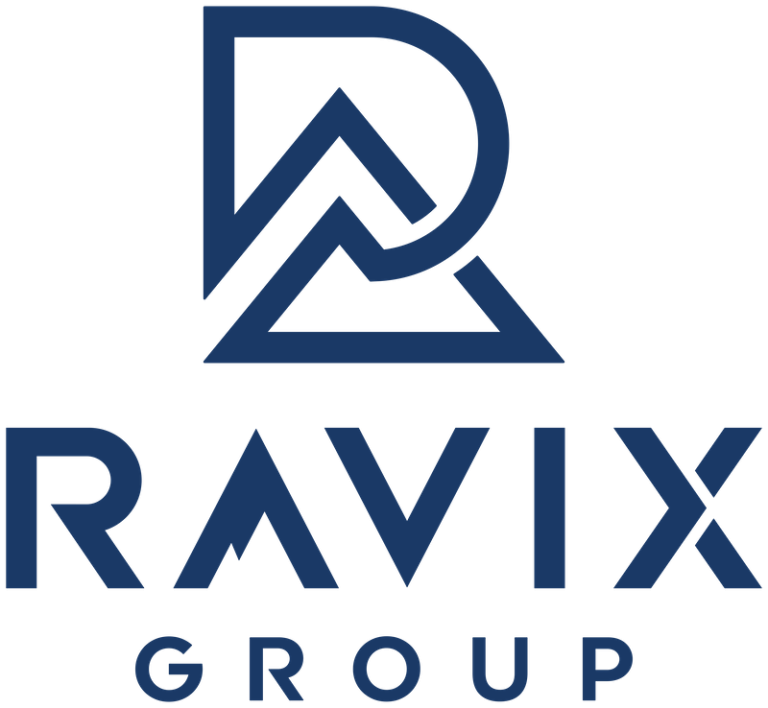Product-market fit is that elusive state where your product not only meets market needs but does so in a way that resonates deeply with your users. Traditional markers of product-market fit, like rapid user growth or media attention, are lagging indicators. They tell you what has happened, not what’s going to happen. Many founders have cut costs, increased runway, and need to raise cash in the next year. By the next time they fundraise, they must prove they’ve achieved product-market fit to a cautious investment community. How can founders show investors they’re climbing on a PMF ladder to Unicorn Peak?
Superhuman’s Framework for PMF
The quest for product-market fit is often fraught with uncertainty and guesswork, but Rahul Vohra, CEO of Superhuman, offers a systematic and measurable approach. His experience and methodology provide valuable insights for startups looking to navigate this critical phase, especially those with less runway. Vohra’s strategy hinges on a fundamental question: “How would you feel if you could no longer use the product?” This question quantified into measurable responses, is a leading indicator of product-market fit. The key is in the percentage of users who respond with “very disappointed.” Sean Ellis, who coined the term “growth hacker,” identified that a threshold of 40% in this category is indicative of a strong product-market fit
Conduct a User Survey: Ask your users the critical question about how they would feel if they could no longer use your product. Include additional questions to gather insights on who benefits most from your product, the main benefits they receive, and areas for improvement.
Analyze and Segment Responses: Focus on users who would be “very disappointed” without your product. This group represents your product’s core supporters. Use their characteristics to refine your Ideal Customer Profile (ICP).
Understand Your High-Expectation Customers: Identify and analyze your user base’s high-expectation customers (HXCs). These users use your product, and their needs align closely with what your product offers. Tailor your product development and marketing efforts to serve this group better.
Iterate Based on Feedback: Use feedback from the HXCs to improve your product. Focus on enhancing the aspects they love and addressing any barriers that prevent other users from becoming HXCs. Implement small changes that can shift users from disappointed to disappointed if they lose access to your product.
Continuously Measure and Adapt: Regularly reassess your product-market fit score by conducting follow-up surveys. Adapt your product strategy based on these ongoing insights, focusing on increasing the percentage of users who are “very disappointed” at the prospect of losing your product.
Leveraging This Approach in a Financial Crunch
In a situation where funds are tight and every decision counts, this methodical approach to determining product-market fit can be invaluable. It provides a clear, data-driven pathway to refining your product that resonates deeply with your core market. This focus can lead to more effective and efficient use of limited resources, ensuring that every effort is directed towards initiatives that will most significantly impact your product’s appeal and, consequently, your startup’s survival and growth.
Be sure to check out the Product Market Fit Engine
The Arc PMF Framework by Sequoia
The framework identifies three archetypes of PMF, each reflecting different customer-product relationship dynamics: Hair on Fire, Hard Fact, and Future Vision.
1. Hair on Fire: This archetype addresses urgent, obvious needs that customers actively seek solutions for, often resulting in a competitive market. Success in this archetype requires a product that stands out not just by being better but by being different, providing a unique customer experience that establishes a clear advantage.
2. Hard Fact: In this archetype, the product addresses issues that customers have resigned to live with, viewing them as unchangeable facts of life. The challenge here is to change consumer habits by presenting an innovative solution that makes it worth changing their behaviors.
3. Future Vision: This archetype involves visionary products that may seem like science fiction to customers. These products create a new reality requiring customers to believe in a new paradigm. Success depends on the product’s ability to inspire belief in its potential to revolutionize aspects of life or industry.
The framework also provides strategic insights on how to operate within each archetype:
- Hair on Fire requires excellent product development and aggressive marketing strategies to capture market share quickly.
- Hard Fact entails educating the market and transforming customer perceptions to see a new possibility where they previously saw an immovable barrier.
- Future Vision demands endurance and creativity, often requiring the founder to navigate through prolonged development and market resistance until achieving a breakthrough.
Sequoia’s framework is designed to help startups not only determine if they have PMF but to understand the dynamics of their market engagement based on how customers perceive and interact with their products. This approach allows founders to tailor their strategies to the specific challenges and opportunities of their chosen path to PMF.
Bessemer’s 5 Framework Insights from Founders
Bessemer Venture Partners, through their “How to Lead: Founders Fundamentals Course,” offers a wealth of insights into attaining this elusive goal. Here are five key takeaways drawn from the experiences of companies like Box, Atlassian, and Shippo that underline the tactics and frameworks essential for new and future founders.
1. The Four Quadrants of Product-Market Fit
Understanding PMF extends beyond mere growth metrics; it involves a robust, two-dimensional matrix that maps customer engagement against the strength of your product and business vision. Adam Fisher, a partner at Bessemer, has crafted a four-quadrant model to aid founders in visualizing and aiming for the upper-right quadrant, where deep customer engagement and a compelling product vision intersect. This model encourages startups to balance listening to their customers with maintaining a solid and innovative vision, avoiding the pitfalls of becoming an echo chamber.
2. Focus to Excel
A critical strategy successful startups employ is focusing on a narrower but potentially more lucrative market segment. Aaron Levie, CEO of Box, shares a transformative decision in the company’s early days: pivoting from a dual focus on consumer and enterprise segments to exclusively targeting enterprise clients. This focus allowed Box to tailor its offerings more effectively and capture significant market share, emphasizing that sometimes, the best strategy is to concentrate resources where they can generate the greatest impact.
3. Leverage Pricing as a Strategic Tool
Scott Farquhar, co-founder of Atlassian, illustrates the power of innovative pricing strategies through the company’s adoption of a freemium model. This approach facilitated market entry across various time zones and enabled Atlassian to capture a vast user base that could be nurtured toward premium offerings. Farquhar’s advice underscores the effectiveness of starting with low or no-cost options to build a user base and then leveraging that foundation to scale up.
4.Start Small to Prove Scale
Laura Behrens Wu, CEO of Shippo, tackled the classic startup catch-22 of needing social proof to secure sales by initially focusing on small to mid-sized businesses. This strategy allowed Shippo to amass a critical mass of users, providing the social proof required to engage larger clients later. Wu’s approach highlights the importance of building credibility through smaller, manageable deals that collectively contribute to a reputation for reliability and scalability.
5. Choose Your Growth Pace Wisely
Choosing how fast to grow is a strategic decision that can define a startup’s trajectory. Bessemer shares the story of Cloudinary, a cloud startup that reached $100 million in Annual Recurring Revenue (ARR) without external funding, showcasing the viability of sustainable growth. This narrative is particularly instructive for founders navigating growth, emphasizing that aggressive expansion isn’t always necessary or advisable, especially when balancing the need for control with market opportunities.
Read Bessemer’s Tackling Product Market Fit: Tactics and Frameworks for Future Founders
Finding Language Market Fit by First Round Capital
Matt Lerner, co-founder and CEO of Startup Core Strengths, draws from his vast experience at PayPal and 500 Startups to emphasize the crucial role of language in resonating with potential customers. This concept, which he terms “language/market fit,” is often overshadowed by the pursuit of product/market fit but is equally vital for startup success. Here’s a comprehensive breakdown of Lerner’s insights and recommendations for achieving effective communication that resonates deeply with target audiences.
The Importance of Language/Market Fit
Lerner argues that finding the right language to describe your product is foundational, likening it to picking a lock. The right words can dramatically improve conversion rates and engage customers who feel like you’ve read their minds. This isn’t just about better marketing; it’s about connecting with the inherent goals and struggles of the audience. When startups fail to achieve language/market fit, their growth efforts often feel futile, marked by poor ad performance and disappointing conversion rates.
How to Achieve Language/Market Fit
Lerner outlines a four-step process to discover and refine the optimal language that appeals directly to potential customers:
1. Uncover Their Goals, Struggles, and Language: Conduct interviews with recent customers to delve deep into their buying journey, discovering their core needs and the language they use to describe their challenges and solutions.
2. Draft Some Headlines: Using insights from these interviews, create potential headlines that speak directly to the customers’ desires and pain points, framing your product as the solution.
3. Validate Comprehension: Test these headlines with new individuals to ensure the message is clear and resonates well. This step confirms that the intended message is being comprehended correctly.
4. Run Quantitative Tests: Once the message is refined and understood, test it quantitatively, such as through A/B testing in ads, to see which variations perform best and refine further based on data.
Finding language/market fit requires stepping out of the comfort zone, especially for technically oriented founders who may view this as a marketing rather than a foundational task. Lerner suggests that this should be integrated into the customer discovery process, addressing it early and effectively.
Read more on achieving Language Market Fit
Working on product-market fit before your next fundraise? Receive expert guidance from one of our fractional CFOs
on measuring, tracking, and proving product-market fit for your next investor pool.



